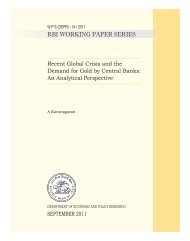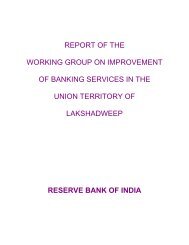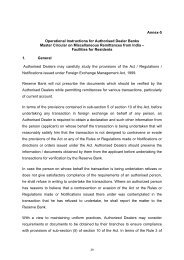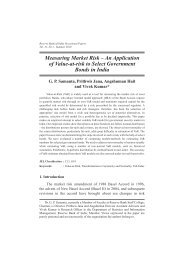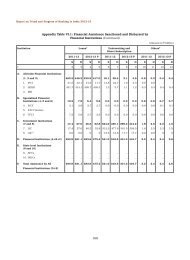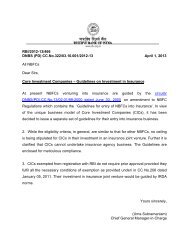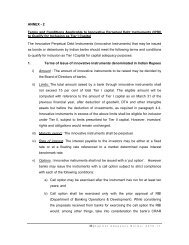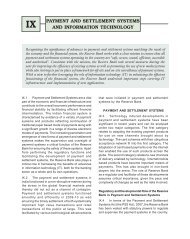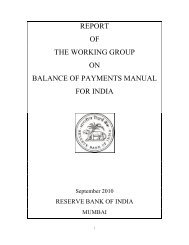CHAPTER 2 OVERVIEW OF FULLER CAPITAL ACCOUNT ...
CHAPTER 2 OVERVIEW OF FULLER CAPITAL ACCOUNT ...
CHAPTER 2 OVERVIEW OF FULLER CAPITAL ACCOUNT ...
Create successful ePaper yourself
Turn your PDF publications into a flip-book with our unique Google optimized e-Paper software.
Know Your Customer (KYC) and Financial Action Task Force (FATF) norms. In<br />
the case of the present NRI schemes for various types of investments, other than<br />
deposits, there are a number of procedural impediments and these should be<br />
examined by the Government and the RBI.<br />
2.13 In practice, the distinction between current and capital account<br />
transactions is not always clear-cut. There are transactions which straddle the<br />
current and capital account. Illustratively, payments for imports are a current<br />
account item but to the extent these are on credit terms, a capital liability<br />
emerges and with increase in trade payments, trade finance would balloon and<br />
the resultant vulnerability should carefully be kept in view in moving forward to<br />
FCAC. Contrarily, extending credit to exports is tantamount to capital outflows.<br />
2.14 As regards residents, the capital restrictions are clearly more stringent<br />
than for non-residents. Furthermore, resident corporates face a relatively more<br />
liberal regime than resident individuals. Till recently, resident individuals faced a<br />
virtual ban on capital outflow but a small relaxation has been undertaken in the<br />
recent period. There is justification for some liberalisation in the rules governing<br />
resident individuals investing abroad for the purpose of asset diversification. The<br />
experience thus far shows that there has not been much difficulty with the<br />
present order of limits for such outflows. It would be desirable to consider a<br />
gradual liberalisation for resident corporates/business entities, banks, non-banks<br />
and individuals. The issue of liberalisation of capital outflows for individuals is a<br />
strong confidence building measure, but such opening up has to be well<br />
calibrated as there are fears of waves of outflows. The general experience is<br />
that as the capital account is liberalised for resident outflows, the net inflows do<br />
not decrease, provided the macroeconomic framework is stable.<br />
2.15 As India progressively moves on the path of FCAC, the issue of<br />
investments being channelled through a particular country so as to obtain tax<br />
benefits would come to the fore as investments through other channels get






